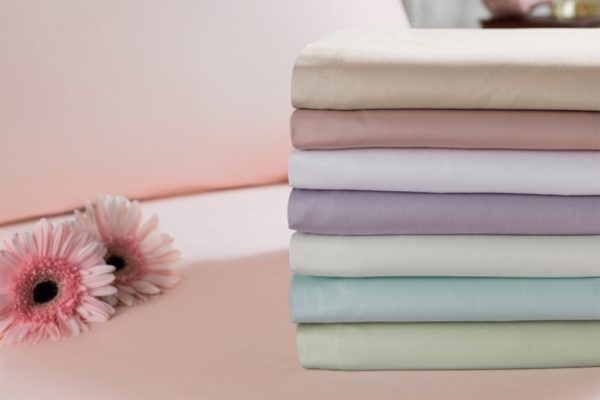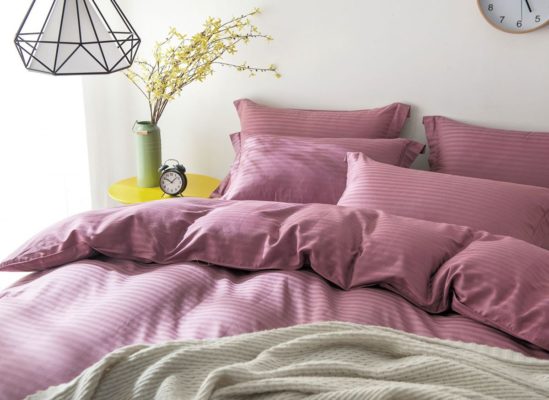When you go to bed, you make the bed, fluff up the pillows, straighten the sheets and throw a warm or not so warm blanket over yourself, depending on the season.. The duvet cover performs a very important function - it protects the duvet from dirt and sweat stains.

What is a duvet cover
Usually the duvet cover is two pieces of fabric sewn together. A hole is left in one of the sides so that you can easily insert the blanket inside, and then pull it out and wash the duvet cover. At the same time, the blanket always remains clean.

Some grandmothers still have old bedding items with a hole in the middle in the shape of a diamond or square. The bed must be made so that this diamond remains on top. Nowadays, such products are practically not produced, so you can rotate the duvet cover as you like.
What are the types and sizes of duvet covers?
Blankets come in different varieties, so the range of duvet cover sizes is quite wide. The following models can be seen on sale:
- children's – 147x115 cm;
- one and a half – 215x145 cm;
- double – 215x175 cm;
- euro – 220x200 cm;
- family – 260x220 cm.

Please note that these indicators are not always respected by manufacturers. For example, duvet covers made in Western Europe can be 10-15 cm wider, while Chinese duvet covers can be the same amount narrower. So measure your blanket and read the product label carefully to ensure you get exactly what you need.
Do not buy a duvet cover that is too large, otherwise the blanket in it will crumple and get lost. It is allowed for the duvet cover to be 3-5 cm larger than the blanket - no more.
Popular materials of manufacture
Having decided on the size and color of the bed linen, be sure to pay attention to the material from which the duvet cover is made. You can find various textiles on sale.

Cotton. Natural fabric, not see-through, large selection of colors. Please ensure that the product does not have a strong odor and that there are no threads sticking out of it. It is comfortable to sleep under a cotton duvet cover; it absorbs moisture from the body well. This type of linen is easy to wash and irons well. The only downsides that can be noted are the loss of flowers under the influence of sunlight and the tendency of the fabric to shrink.

Linen. Running your hand over a linen duvet cover, you will feel the rough weave of threads, as if tied into knots. But it's not scary. Sleeping under such a duvet cover is a pleasure, because linen is able to regulate heat exchange. In summer you will feel pleasantly cool, in winter you will feel warm. And after each wash, the fabric will become softer. So do not deny yourself the pleasure of purchasing linen bed linen. It is especially indicated for people suffering from allergies.
Chintz. This cotton fabric can be printed or plain dyed.Sleeping on it is pleasant and comfortable, easy to iron. But the chintz is too thin, and a duvet cover made from it will not last long.

Calico. The same cotton fabric, only with more frequent weaving, which makes it much tougher than chintz, but at the same time more durable. Calico practically does not need ironing and retains the brightness of colors for a long time. So if you are not afraid of the harsh effects of weaving knots on your delicate skin, you can safely choose it.
Silk. Shiny natural fabric. It is durable, does not electrify, and removes moisture well. Among the disadvantages: it is expensive, requires hand washing with cool water using special products. The material cannot be twisted, and ironing is allowed only from the inside out. So, although such bed linen will be beautiful, it will be too troublesome.

Jacquard. Complex weaving of cotton threads, to which viscose is sometimes added. The pattern on this fabric is convex and resembles a tapestry. The material is dense, durable, does not accumulate electricity, but is disproportionately expensive, and after several washes, pills appear.
Flannel. Brushed cotton, sometimes with the addition of synthetics. The pile may be present on one side or both. When washed it becomes softer and warms well in the cold season. But you have to wait a long time for it to dry after washing. And during use, the flannel wrinkles a lot.
Viscose. Unlike previous fabrics, this one is artificial and made from cellulose. But in appearance it is no different from its natural counterparts - it is just as pleasant to the touch, does not lose color during repeated washing, and does not electrify. True, it wrinkles and sheds a lot when drying in the sun.

Microfiber. The material resembles cotton in appearance, but is made of polyester.The fabric washes well, hardly wrinkles, is not subject to shedding, and does not fade. But washing microfiber at high temperatures is strictly prohibited, and it can also accumulate electrical charges.
When choosing a duvet cover, also pay attention to the density of the fabric - the denser the weave, the longer the bed linen will last you. Paint fastness can be determined by the permissible washing temperature. The higher the temperature, the longer the design applied to the fabric will last in its original form.
The panels must be sewn from solid pieces of fabric without additional seams. The color of the threads should match the color of the duvet cover. Well, choose the design of the product at your own discretion.


 0
0





